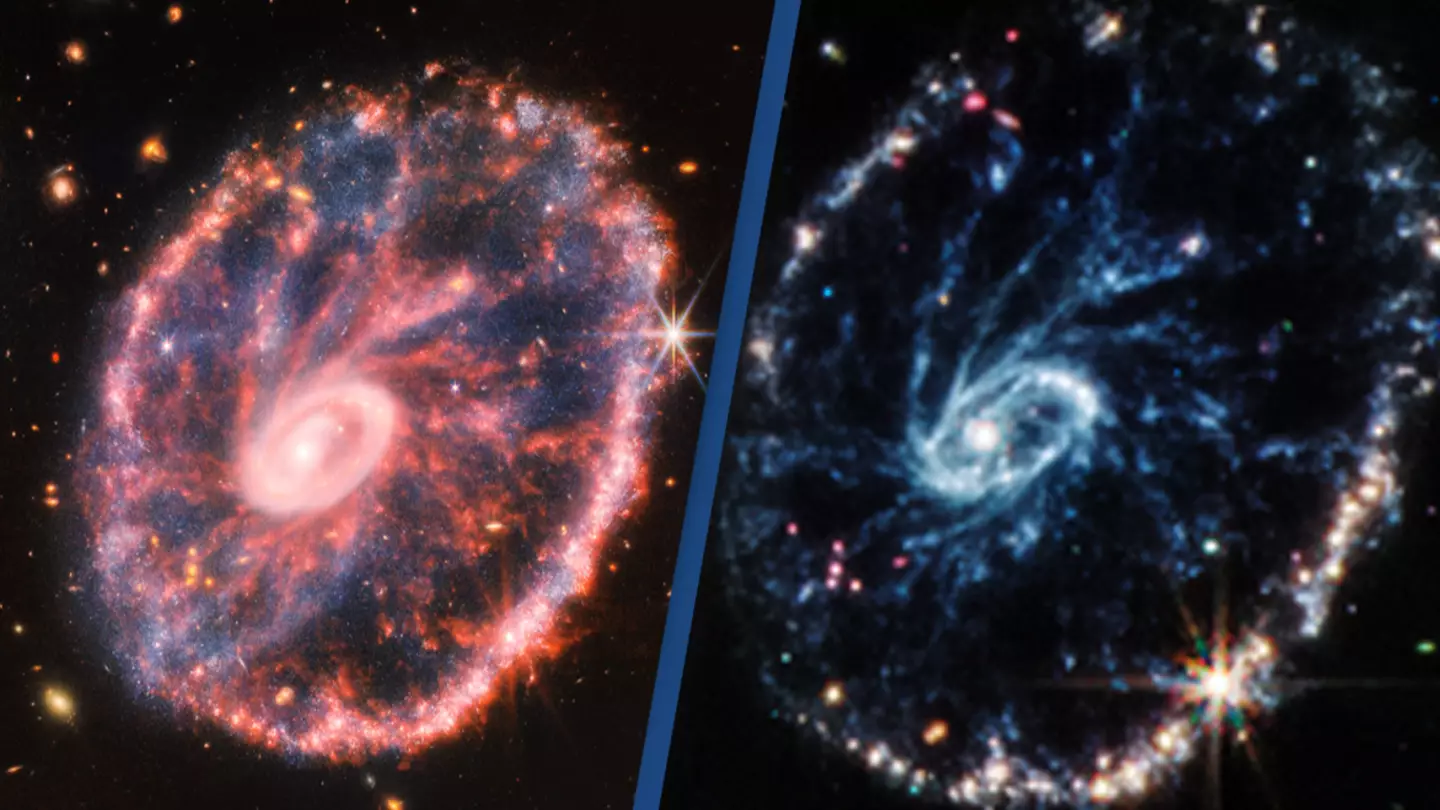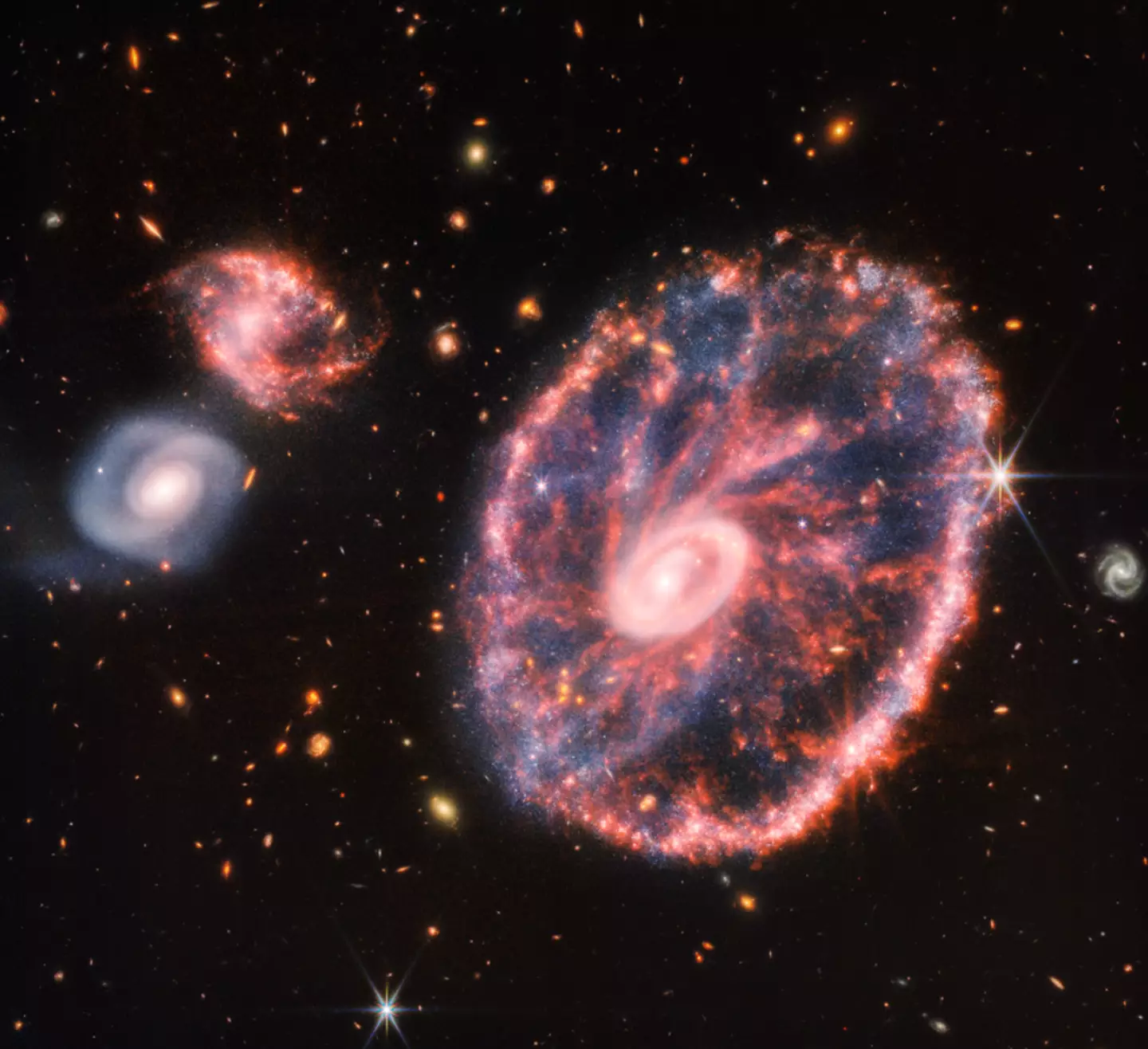
The incredible James Webb telescope has revealed pictures of the Cartwheel Galaxy, located around 500 million light years away.
As if we weren't already obsessed with the far-seeing telescope able to peer through dust clouds, now it's sent back pictures of a galaxy prettier than we could ever imagine.
NASA shared the news on Twitter and it might be the best thing we've seen this week.
Excited about the new images the space agency said: "Time to reinvent the wheel. Here’s the Cartwheel Galaxy in a whole new light — as a composite image from 2 instruments on the Webb telescope. Webb uniquely offers not just a snapshot of the galaxy’s current state, but also a peek into its past & future."
Advert
For those unfamiliar, the Cartwheel Galaxy is located in the Sculptor constellation and while it's been studied before by the Hubble Space Telescope, we've never had a clear view of it until now.
Advert
The galaxy gets its name from its appearance, as NASA note: "The Cartwheel Galaxy sports two rings — a bright inner ring and a surrounding, colourful ring.
"These two rings expand outwards from the centre of the collision, like ripples in a pond after a stone is tossed into it."
So, why has the two-ringed galaxy been ridiculously hard to see? Well, the "bright core contains a tremendous amount of hot dust with the brightest areas being the home to [the] gigantic young star cluster."
This dust meant that older telescopes, like the Hubble struggled to get a clear view, with NASA adding: "The dramatic galaxy has been shrouded in mystery – perhaps literally, given the amount of dust that obscures the view."

Advert
But, because the James Webb can detect infrared light it can peer straight through the dust, revealing the incredible double wheel galaxy.
And the telescope's ability to study the galaxy closer has revealed some interesting insights into the structure: "Webb’s observations underscore that the Cartwheel is in a very transitory stage. The galaxy, which was presumably a normal spiral galaxy like the Milky Way before its collision, will continue to transform."
A peak into how a galaxy will evolve in the future - if that's not the coolest thing you've ever heard, we don't know what is.
If you have a story you want to tell, send it to UNILAD via [email protected]